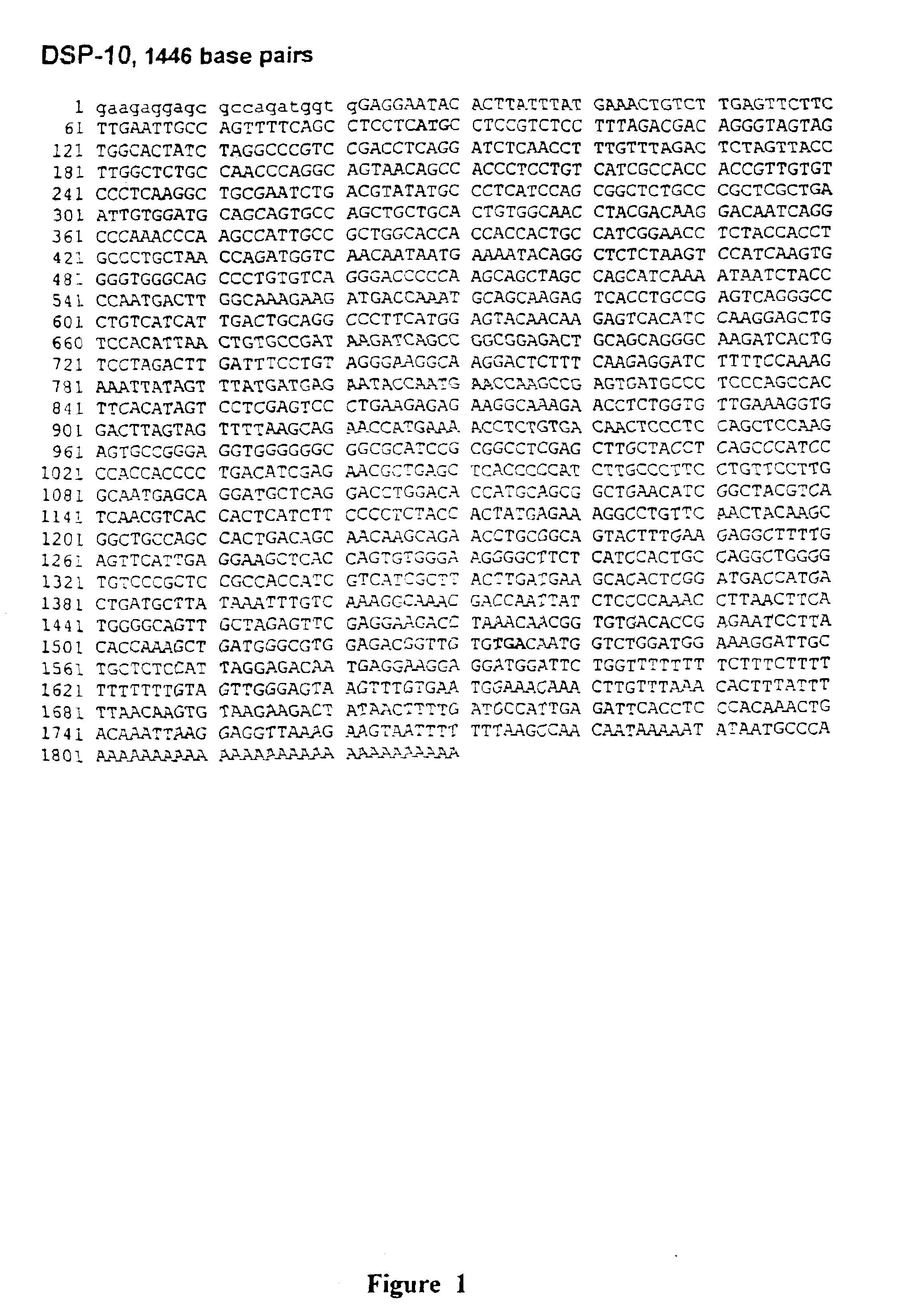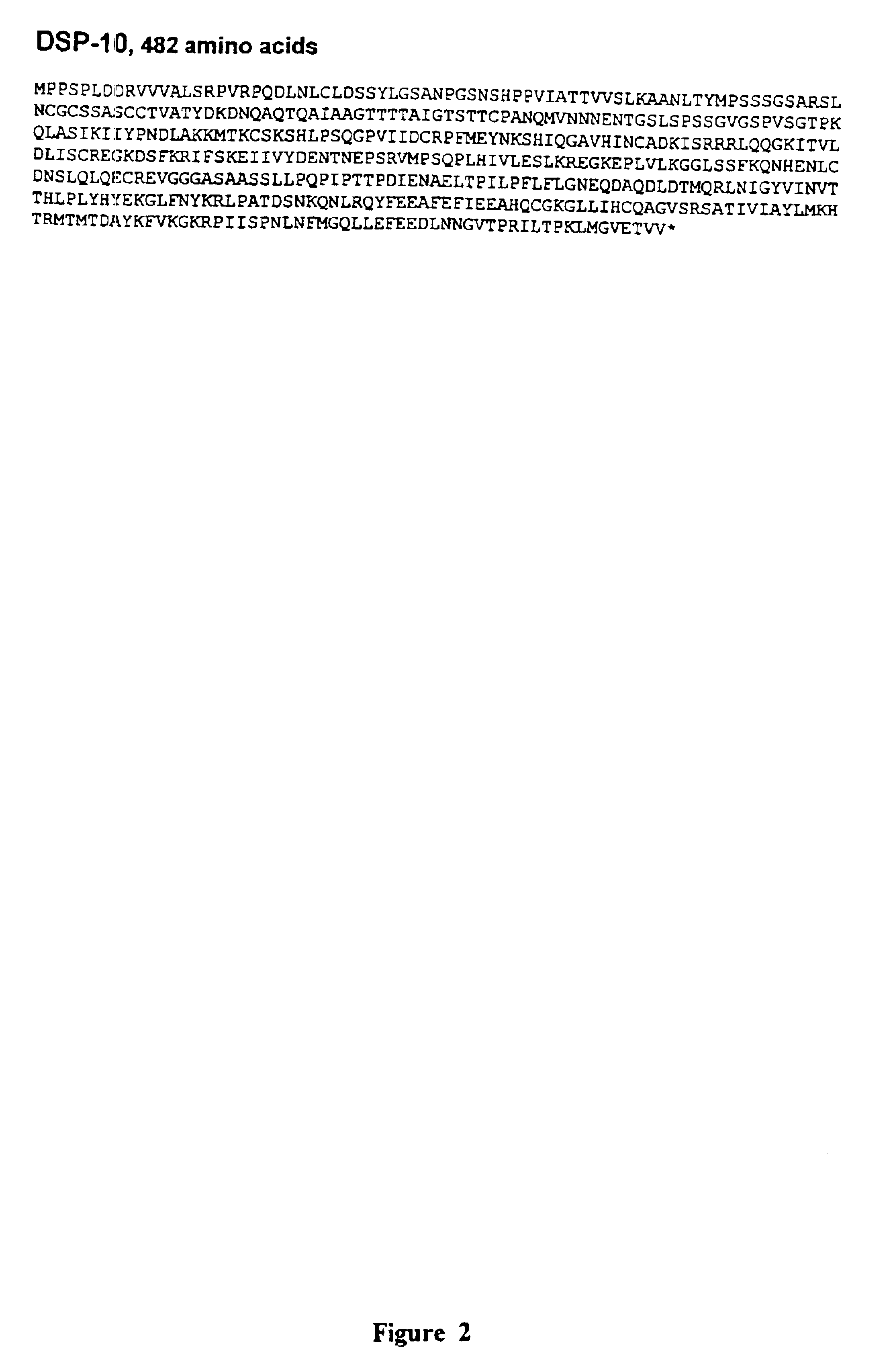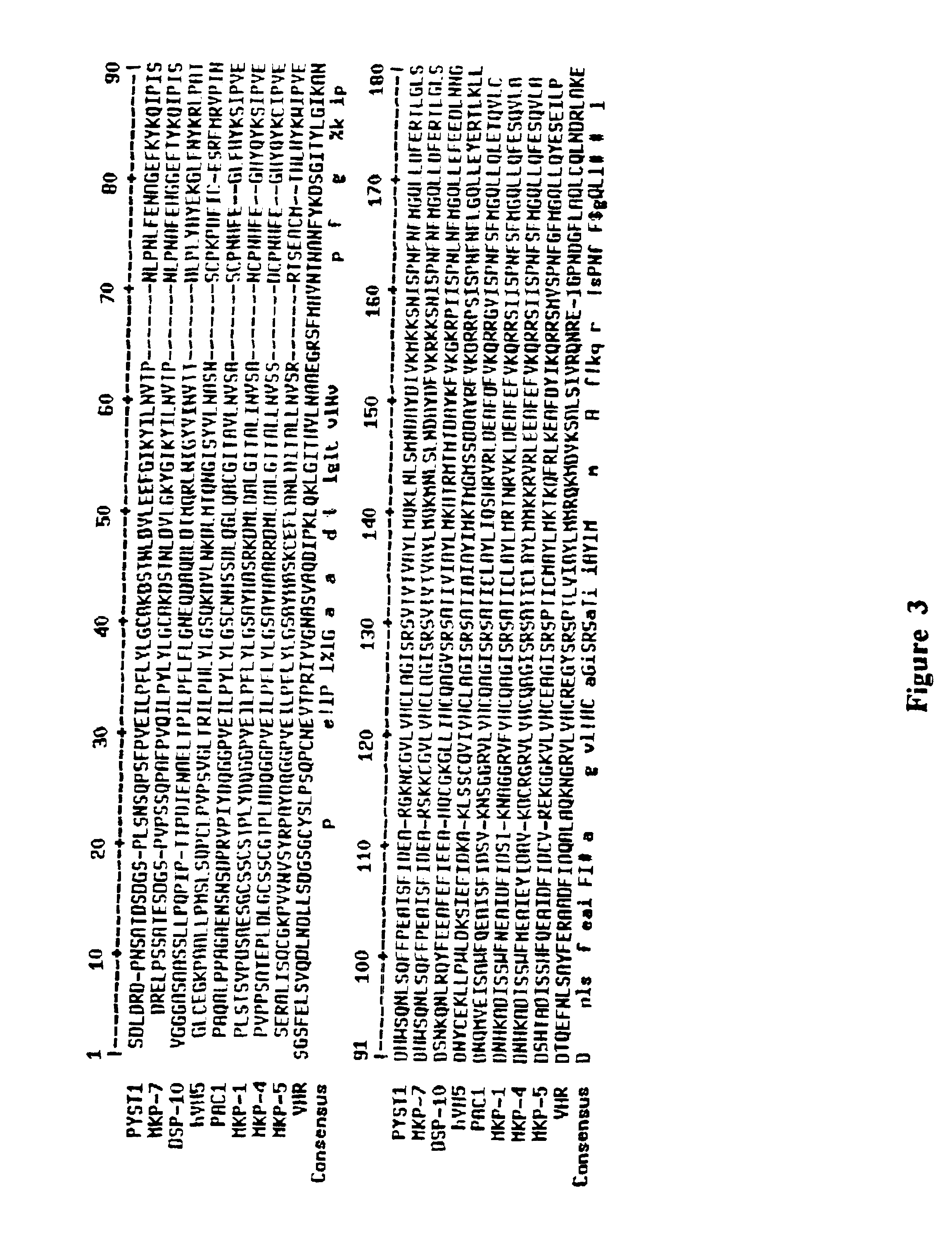DSP-10 dual-specificity phosphatase
a dual-specificity, phosphatase technology, applied in the direction of depsipeptides, peptide/protein ingredients, fungi, etc., can solve the problem that the regulation of dual-specificity phosphatases remains poorly understood
- Summary
- Abstract
- Description
- Claims
- Application Information
AI Technical Summary
Benefits of technology
Problems solved by technology
Method used
Image
Examples
example 1
Cloning and Sequencing cDNA Encoding DSP-10
[0118]This Example illustrates the cloning of a cDNA molecule encoding human DSP-10.
[0119]A conserved sequence motif defining a novel homology domain of dual-specificity phosphatases was identified as follows: Dual specificity phosphatases belong to the larger family of protein tyrosine phosphatases (PTPs) that share a conserved catalytic domain containing a cysteine residue situated N-terminal to a stretch of five variable amino acids followed by an arginine residue (Fauman et al., Trends In Bioch. Sci. 21:413-417, 1996). DSPs typically contain a PTP active site motif but lack sequence homology to PTPs in other regions (Jia, Biochem. and Cell Biol. 75:17-26, 1997). There is, however, no reported consensus sequence that is conserved among DSPs, nor is a consensus region apparent from examination of the known DSP sequences such as those referred to above. To derive a longer consensus DSP amino acid sequence motif that would be useful for the...
example 2
DSP-10 Expression in Human Tissues
[0127]In this example, a DSP-10 encoding nucleic acid sequence is shown to hybridize to human polyA+ RNA from various tissue sources. Full length DSP-10 encoding cDNA (SEQ ID NO:1) was 32P-labeled by the random primer method as described in Ausubel et al. (1998 Current Protocols in Molecular Biology, Greene Publ. Assoc. Inc. & John Wiley & Sons, Inc., Boston, Mass.) for use as a nucleic acid hybridization probe. The probe was hybridized to blots containing human polyA+ RNA derived from multiple human tissues, normalized for the amount of detectable β-actin mRNA (FIG. 4, Cat. No. 7759-1; Clontech, Inc., Palo Alto, Calif.). Blots underwent prehybridization for 30 min at 68° C. in Express Hyb™ solution (Clontech), and then were hybridized with the labeled probe for 1 hour at 68° C. in Express Hyb™ solution. The blots were next washed for 40 min at room temperature in 2X SSC, 0.05% SDS, followed by a second wash for 40 min at 50° C. in 0.1X SSC, 0.1% SD...
PUM
| Property | Measurement | Unit |
|---|---|---|
| temperatures | aaaaa | aaaaa |
| pH | aaaaa | aaaaa |
| pH | aaaaa | aaaaa |
Abstract
Description
Claims
Application Information
 Login to View More
Login to View More - R&D
- Intellectual Property
- Life Sciences
- Materials
- Tech Scout
- Unparalleled Data Quality
- Higher Quality Content
- 60% Fewer Hallucinations
Browse by: Latest US Patents, China's latest patents, Technical Efficacy Thesaurus, Application Domain, Technology Topic, Popular Technical Reports.
© 2025 PatSnap. All rights reserved.Legal|Privacy policy|Modern Slavery Act Transparency Statement|Sitemap|About US| Contact US: help@patsnap.com



